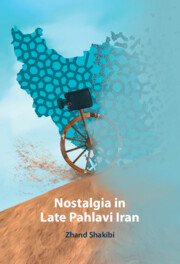Book contents
- Nostalgia in Late Pahlavi Iran
- Nostalgia in Late Pahlavi Iran
- Copyright page
- Dedication
- Contents
- Acknowledgements
- 1 Introduction
- 2 Those Were the Days
- 3 Nostalgia and the Late Pahlavi State
- 4 Nostalgic Triad
- 5 Love and Marriage
- 6 Mind the Generation Gap
- 7 The Hippies Are Coming! The Hippies Are Coming!
- 8 Mother’s Guest: Urban Nostalgia
- 9 What Were Those Days?
- 10 Law and Order
- 11 O’ The Ruthless Ones!
- Epilogue
- Select Bibliography
- Index
- References
Select Bibliography
Published online by Cambridge University Press: 20 March 2025
- Nostalgia in Late Pahlavi Iran
- Nostalgia in Late Pahlavi Iran
- Copyright page
- Dedication
- Contents
- Acknowledgements
- 1 Introduction
- 2 Those Were the Days
- 3 Nostalgia and the Late Pahlavi State
- 4 Nostalgic Triad
- 5 Love and Marriage
- 6 Mind the Generation Gap
- 7 The Hippies Are Coming! The Hippies Are Coming!
- 8 Mother’s Guest: Urban Nostalgia
- 9 What Were Those Days?
- 10 Law and Order
- 11 O’ The Ruthless Ones!
- Epilogue
- Select Bibliography
- Index
- References
- Type
- Chapter
- Information
- Nostalgia in Late Pahlavi Iran , pp. 369 - 388Publisher: Cambridge University PressPrint publication year: 2025

